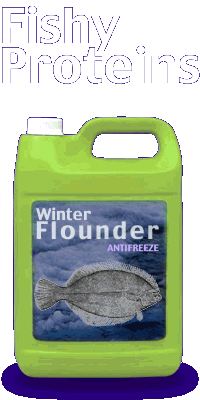
Water
1. Introduction: the presence of water assures the presence of life
2. Good old H2O: Molecular structure of water
electronegativity again
Key concept: THE HYDROGEN BOND
3. Water Structure
water behavior movie
4. Properties of water explained by hydrogen bonding
Table 1. Physical properties of water compared with other molecules of similar size
| Molecule | Mass (Da) | Specific Heat (J/g/C) | Heat of vaporization (J/g) | Melting Point (C) | Boiling Point (C) |
| Water | 18 | 4.2 | 2452 | 0 | 100 |
| Ammonia | 17 | 5.0 | 1234 | -77 | -33 |
| Methanol | 32 | 2.6 | 1226 | -94 | 65 |
| Ethanol | 46 | 2.4 | 878 | -117 | 78 |
surface tension (Water Striders; Capillary action: How water gets to the top of a tall tree)
specific heat or heat capacity: amount of heat that must be absorbed or lost for 1g of that substance to change its temperature by 1 degree C
(Consequences: Why the lake is warmer in the Autumn; How high specific heat helps mammals to maintain body temperature; Protecting enzymes)
heat of vaporization: quantity of heat a liquid must absorb for 1 g of it to be converted from the liquid to the gaseous state
(Consequences: How do plants and animals keep cool?)
Temperature and density of water; The structure and density of ice (Ice is less dense and occupies more volume than liquid water)
Consequences: Ice floats; Expanding water ruptures cell membranes; cells dehydrate
How can ice crystal formation be prevented?
Cryonics and Ted Williams)
Fish Antifreeze proteins (trout without antifreeze proteins at 0 C)

5. Water as a solvent
water is called the "universal solvent" (wrong!)
the shape of enzymes in water
6. pH and Buffers
How ionization of water occurs
What is a mole?
Buffers:
a solution that resists changes in pH
consists of weak acid, plus conjugate base
(acid - H+ donor; base - H+ acceptor)
Example:
bicarbonate buffer in blood
a weak acid (carbonic acid H2CO3) is formed when CO2 dissolves in water (blood serum):
CO2 + H2O ---> H2CO3
This acid is 'weak' because it slowly dissociates into:
H2CO3 ---> H+ (protons) + HCO3- (bicarbonate ion)
(bicarbonate ion is the conjugate base)
These reactions are in equilibrium with the direction determined
by the concentrations of the reactants
If acid (H+) is added to the buffer, this will 'push the
reaction in the direction of carbon dioxide and water:
H+
+ HCO3- ↔
If base (OH-) is added, then bicarbonate ion and water is
formed:
OH- + H2CO3
↔
Why are buffers needed in biological fluids?
what happens to enzymes as the pH changes?